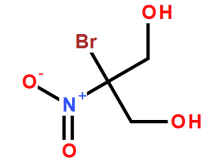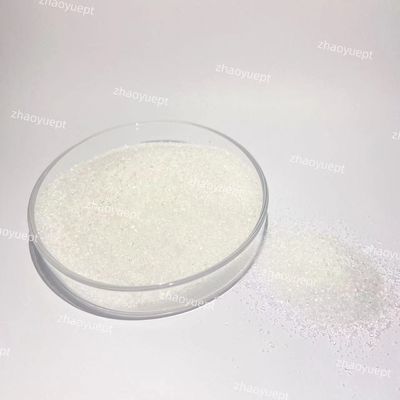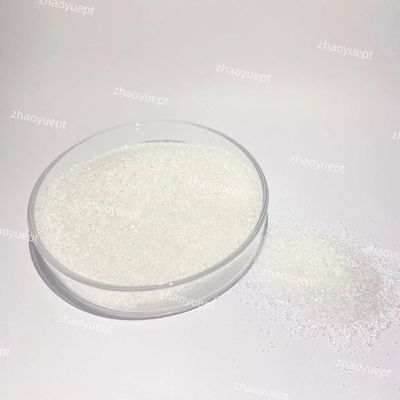Industrial Water Treatment Bronopol Fungicide 2-Bromo-2-Nitro-1,3-Propanediol
| Place of Origin: | WEIFANG,CHINA |
| Brand Name: | ZHAOYU |
| Certification: | ISO 9001; ISO 45001; ISO 14001 |
| Model Number: | 99.0% |
| Minimum Order Quantity: | 500 kgs |
| Price: | Negotiatable |
| Packaging Details: | 25kg Cardboard barrel; 500kg Container bag |
| Delivery Time: | 15 work days |
| Supply Ability: | 2000 Tons/Year |
|
Detail Information |
|||
| Place of Origin | WEIFANG,CHINA | Brand Name | ZHAOYU |
|---|---|---|---|
| Certification | ISO 9001; ISO 45001; ISO 14001 | Model Number | 99.0% |
| Another Name:: | Bronopol、BNPD | Chemical Name:: | 2-Bromo-2-Nitro-1,3-Propanediol |
| Molecular Formula:: | C3H6BrNO4 | Molecular Weight:: | 199.988 |
| CAS NO.:: | 52-51-7 | Einecs NO.:: | 200-143-0 |
| Content:: | 99.0% Min | Moisture:: | 0.5% Max |
| Appearance:: | White To Light Yellow Crystalline Powder | Melting Point:: | 129-132℃ |
| Stability:: | Slightly Hygroscopic | Highlight: | 52-51-7 Bronopol In Agriculture,ISO9001 Water Treatment Chemicals,ISO 9001 Bronopol In Agriculture |
Product Description
Physical and chemical properties: The content of pure product is 99% (the content of aldehyde is 30%), and the appearance is white to light yellow powder or crystal. The melting point is 130°C. Vapor pressure (20°C) 1.68mPa. Solubility: water 250g/L (22°C); ethanol 500g/L, isopropanol 250g/L, propylene glycol 143g/L, glycerin 10g/L, liquid paraffin <5g/L (23~24°C). Stability: slightly hygroscopic.
Mechanism of antibacterial and antifungal effect: Bronopol has bactericidal effect through different chemical reaction mechanisms in aerobic and anaerobic atmospheres. In an aerobic atmosphere, bronopol catalyzes the oxidation of cysteine amino acids to cystine residues (Shepher et al., 1988). This mechanism is thought to act to kill microorganisms through the formation of reactive oxygen species such as superoxide or peroxide. Moreover, the formed cystine residues are attached to the cell wall, preventing the normal formation of the cell wall. The formation of reactive oxygen species and the cross-linking of cystine residues with the cell wall jointly lead to cell death. In an oxygen-free environment, the mechanism is that cells and extracellular nucleophiles attack the No. 2 carbon atom in the bronopol molecule.
The compound has good bactericidal and antibacterial effects on Gram-positive bacteria, Gram-negative bacteria, molds and yeasts, and is particularly effective on Pseudomonas aeruginosa.
2-Bromo-2-Nitro-1,3-Propanediol (Bronopol)

| Product Name | 2-Bromo-2-Nitro-1,3-Propanediol (Bronopol) |
| Molecular Formula | C3H6BrNO4 |
| Molecular Weight | 199.988 |
| CAS NO. | 52-51-7 |
| Appearance | White to light yellow crystalline powder |
| Content | 99.0% min |
| Melting Point | 129-132℃ |
| Moisture | 0.5% max |
The minimum inhibitory concentration (MIC) of bronopol to some microorganisms
| Microorganism | MIC/(mg/L) | Microorganism | MIC/(mg/L) |
|
Staphylococcus aureus NCIB 9518 |
25 |
Staphylococcus epidermidis NCTC 7291 |
25 |
|
Streptococcus faecalis NCTC 8213 |
25 |
Escherichia coli NCIB 9517 |
25 |
|
Klebsiella obstetrics NCTC 418 |
25 |
Proteus vulgaris NCTC 4635 |
25 |
|
Pseudomonas aeruginosa NCTC 6750 |
25 |
Pseudomonas fluorescens NCIB 9046 |
25 |
|
Salmonella typhimurium NCTC 74 |
12.5 |
Desulfovibrio NCIB 8301 |
12.5 |
|
Candida albicans ATCC 10231 |
1600 |
Saccharomyces cerevisiae NCYC 87 |
3200 |
|
Chaetomium globosa IMI 45550 |
800 |
Aspergillus niger ATCC 16404 |
3200 |
| Trichoderma viride | 6400 |
Application: In 1919, bronopol was prepared by R.Wilkendorf, and then the British Pharmaceutical Association announced its general name Bromopol. This biocide is mainly used in industrial circulating water, paper pulp, coatings, plastics, cosmetics, wood, and cooling water circulation systems And other fields including agriculture, sterilization, anti-corrosion and anti-algae. Note: ① Due to the good stability of bronopol in acidic solutions, weakly acidic media are ideal for field applications. ② Exposure to light may make the product yellow, sensitive to iron and aluminum packaging materials, and reacts with amines and alkaline compounds. ③flammable. Produces irritating or toxic fumes (or gases) in a fire, including hydrogen bromide and nitrogen oxides.
Practical application reference:
①As a preservative for cosmetics, this product is added to the processing of shampoos, balms and creams and other cosmetics. When the bactericidal concentration in cosmetics is 0.01%~0.02%, it can inhibit the growth of most bacteria and most organic substances. , various surfactants, and low concentration (<10%) proteins do not affect its activity, and there is no antagonistic effect on each other. Used in conjunction with other antimicrobial agents, there is a synergistic effect. When 25% (mass fraction) of methylisothiazolinone and 75% of bronopol were compounded, the lowest synergy coefficient for Pseudomonas aeruginosa was 0.63, and the synergistic effect was significant.
②In the industrial production system, microorganisms use various organic substances to secrete polysaccharides, and these secretions are then bonded together with various organic or inorganic materials, especially on the inner wall of the pipeline to become a biological mucous membrane. Guanidine polyphosphate: Broble = 1:1 compound fungicide can be used, which has obvious synergies and rapid sterilization and film removal.
③Indoor artificial infection prevention test and treatment test verified this result. Tests have shown that the compound preparation of bronopol and isothiazolone with a ratio of 4:1 has better preventive and therapeutic effects than a single agent. When the drug concentration was 4mg/L and 8mg/L, the average protection rate of the compound preparation to grass carp saprolegniasis was 100%; the cure rate at low concentration (4mg/L) was 86.5%, and at high concentration (8mg /L), the cure rate can reach 96.5%, showing a good preventive effect (Yu Yunzhen et al., 2016).
④Report by He Xiaorong: Bronopol is a special kind of preservative, which is rarely used alone in practical applications, and is usually used in combination with other preservatives. There has always been a misunderstanding of bronopol in the industry, and it is believed that it belongs to the "formaldehyde releasing body" type of preservative. Although in some cases bronopol will release a small amount of formaldehyde due to hydrolysis, even considering the most extreme hydrolysis conditions, the amount of formaldehyde released in bronopol is far below the dose required for bactericidal action, so bronopol It is not a real "formaldehyde releasing body" preservative.
⑤Classic formula (bronopol + CMIT/MIT): This series is a low-VOC, isothiazolinone fungicide with excellent heat resistance, suitable for wet-state anticorrosion of water-based products sensitive to formaldehyde.




